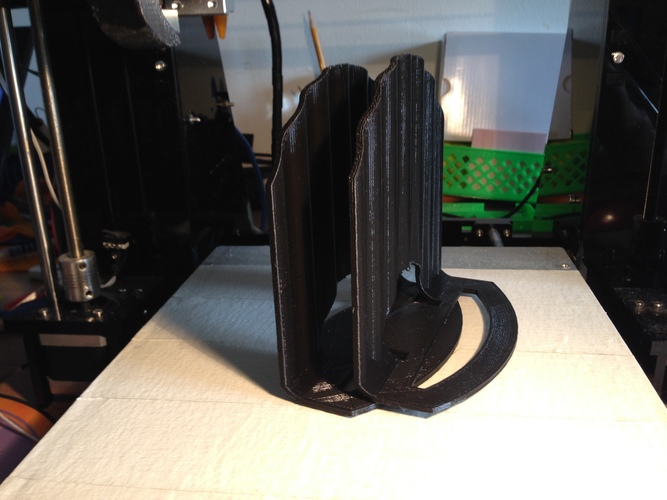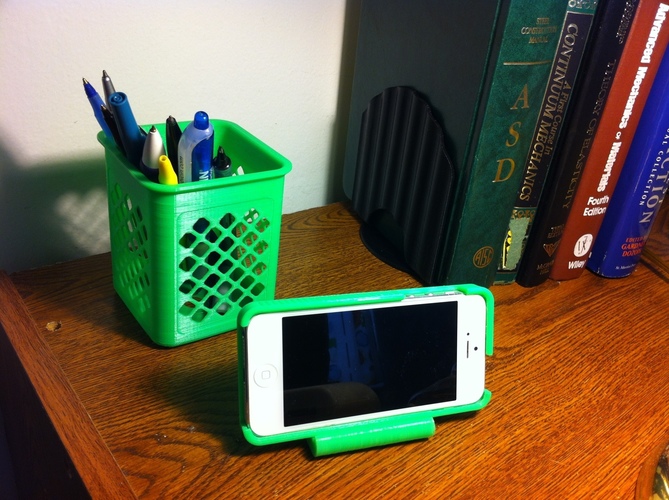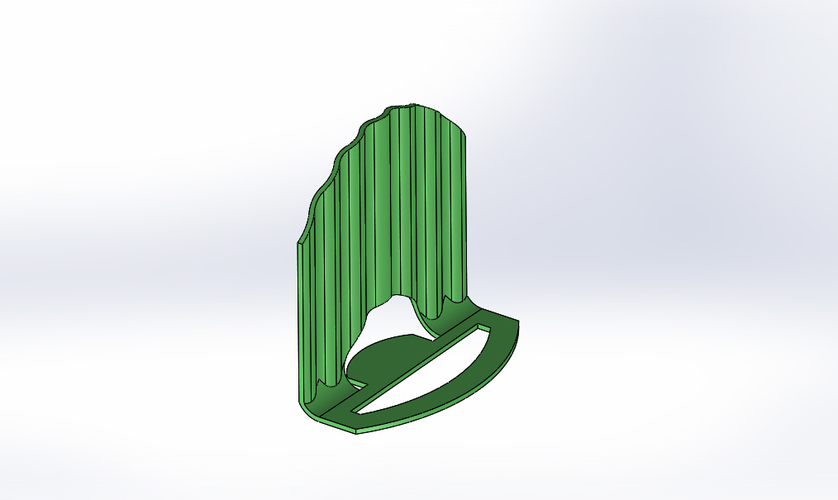Hey there, bookworms and tech enthusiasts! Ever wondered how you can combine your love for reading with the latest in tech innovation? Well, let me introduce you to the game-changer in the literary world: 3D printed book holders. These little wonders are not just about holding your books; they’re about transforming your reading experience. If you're into DIY projects, sustainable living, or just want a cool gadget for your bookshelf, this is the perfect read for you.
3D printed book holders are taking the world by storm, and for good reason. They’re customizable, eco-friendly, and super affordable compared to traditional book holders. Whether you're a student trying to keep your textbooks organized or a book collector who wants to display your prized possessions, these holders are here to save the day. So, buckle up because we’re diving deep into the world of 3D printed book holders, and trust me, it’s gonna be an epic ride.
Before we jump into the nitty-gritty, let’s address the elephant in the room: why should you care? Well, if you’ve ever struggled with a book that keeps closing on you or you're tired of those flimsy bookmarks that don’t quite do the job, this is your solution. Plus, with the rise of 3D printing technology, creating your very own book holder has never been easier. Let’s get started, shall we?
Read also:Onlyfans Alexis Fawx The Ultimate Guide To Her Rise And Success
What Exactly is a 3D Printed Book Holder?
Let’s break it down, shall we? A 3D printed book holder is basically a device designed to hold your books open at the perfect angle, ensuring you can read comfortably without having to physically hold the book. But what makes it special is how it’s made. Using 3D printing technology, you can design and print these holders in various shapes, sizes, and colors, all tailored to your specific needs. Imagine having a book holder that matches your favorite mug or even your favorite character. Pretty cool, right?
Now, why choose a 3D printed book holder over traditional ones? For starters, they’re way more customizable. You can adjust the design to fit the size of your books, whether it’s a small paperback or a massive encyclopedia. Plus, they’re super lightweight, making them easy to carry around. And let’s not forget the cost factor. Traditional book holders can get pretty pricey, but with a 3D printer, you can create one for a fraction of the cost.
Why 3D Printing is the Future of Book Holders
So, why is 3D printing the next big thing in the world of book holders? Well, it’s all about innovation and accessibility. With 3D printing, you’re not limited to pre-made designs. You can create something that’s uniquely yours, tailored to your preferences. Plus, the technology is becoming more and more accessible to the average consumer, meaning you don’t have to be a tech wizard to use it.
Another major advantage is the environmental impact. Traditional manufacturing often involves a lot of waste, but 3D printing allows for more precise production, reducing material waste significantly. This makes it a more sustainable option, which is a big plus for those of us who care about the planet.
How to Design Your Own 3D Printed Book Holder
Ready to get your hands dirty? Designing your own 3D printed book holder is easier than you think. All you need is a basic understanding of 3D modeling software and access to a 3D printer. There are tons of free resources online where you can download pre-made designs, or you can create your own from scratch.
Here’s a quick step-by-step guide to get you started:
Read also:Upper Crust Riverside The Ultimate Guide To Elevating Your Lifestyle
- Choose a 3D modeling software like Tinkercad or Fusion 360.
- Sketch out your design, keeping in mind the size and shape of your books.
- Export your design as an STL file.
- Send the file to your 3D printer and watch the magic happen.
Trust me, once you see your design come to life, you’ll be hooked. Plus, it’s a great way to flex your creative muscles and show off your tech skills.
Benefits of Using a 3D Printed Book Holder
Now that we’ve covered the basics, let’s talk about the benefits. Why should you switch to a 3D printed book holder? Here are just a few reasons:
- Customization: Create a holder that fits your unique style and needs.
- Cost-Effective: Once you have a 3D printer, the cost of materials is minimal compared to buying pre-made holders.
- Eco-Friendly: Less waste and more sustainability.
- Portability: Lightweight and easy to carry around.
And let’s not forget the sheer satisfaction of saying, “Yeah, I made this myself.” There’s something incredibly rewarding about creating something with your own hands, even if it’s with the help of a machine.
Top Materials for 3D Printing Book Holders
When it comes to 3D printing, material choice is key. The right material can make all the difference in the durability and appearance of your book holder. Here are some of the top materials you should consider:
PLA (Polylactic Acid)
PLA is one of the most popular materials for 3D printing due to its ease of use and wide range of colors. It’s also biodegradable, making it an eco-friendly choice. However, it’s not the most durable, so it might not be the best option for heavy books.
ABS (Acrylonitrile Butadiene Styrene)
ABS is known for its strength and flexibility, making it a great choice for book holders that need to support heavier books. The downside is that it can be a bit trickier to print with, requiring a higher temperature and sometimes a heated bed.
PETG (Polyethylene Terephthalate Glycol)
PETG strikes a balance between PLA and ABS, offering good strength and flexibility without being too difficult to print. It’s also highly resistant to impact, making it a great option for long-term use.
Best 3D Printers for Book Holders
Not all 3D printers are created equal, and choosing the right one can make or break your project. Here are some of the best 3D printers for creating book holders:
Creality Ender 3
The Creality Ender 3 is a popular choice among hobbyists and professionals alike. It’s affordable, easy to set up, and offers great print quality. Plus, there’s a huge community of users who can offer tips and tricks for getting the most out of your printer.
Prusa i3 MK3S+
If you’re looking for top-of-the-line quality, the Prusa i3 MK3S+ is the way to go. It’s more expensive than the Ender 3, but it offers superior precision and reliability. If you’re serious about 3D printing, this is the printer for you.
Anycubic Mega S
The Anycubic Mega S is another great option for beginners. It’s user-friendly and offers a large build volume, meaning you can create bigger designs without having to assemble multiple parts.
How to Maintain Your 3D Printed Book Holder
Once you’ve created your book holder, it’s important to take care of it to ensure it lasts as long as possible. Here are a few tips:
- Clean Regularly: Dust and debris can accumulate on your holder, so make sure to wipe it down occasionally.
- Store Properly: Keep it in a dry place to prevent any warping or damage.
- Check for Wear and Tear: If you notice any cracks or weak spots, consider reinforcing it or printing a new one.
With a little care, your 3D printed book holder can last for years, providing you with countless hours of reading pleasure.
Where to Find 3D Printed Book Holder Designs
If you’re not quite ready to design your own book holder, there are tons of pre-made designs available online. Websites like Thingiverse and MyMiniFactory offer a wide range of free and paid designs that you can download and print. Just make sure to read the reviews and check the print settings to ensure a successful print.
And if you’re feeling adventurous, you can always modify existing designs to suit your needs. Most designs are open-source, meaning you can tweak them however you like. Just remember to give credit where credit is due if you share your modifications with others.
Tips for Successful 3D Printing
3D printing can be a bit tricky at first, but with a few tips and tricks, you’ll be printing like a pro in no time. Here are some things to keep in mind:
- Calibrate Your Printer: Make sure your printer is properly calibrated to avoid issues like warping or shifting.
- Use Quality Filament: Cheap filament can lead to poor print quality, so invest in a good brand.
- Test Prints: Before committing to a full-sized print, do a small test print to ensure everything is working correctly.
And don’t forget to have fun with it. Experiment with different designs and materials to find what works best for you. The more you practice, the better you’ll get.
Conclusion: Why You Need a 3D Printed Book Holder
So, there you have it, folks. The world of 3D printed book holders is vast and exciting, offering endless possibilities for customization and creativity. Whether you’re a seasoned 3D printing pro or a complete beginner, there’s something for everyone in this space.
By now, you should have a solid understanding of what 3D printed book holders are, why they’re beneficial, and how to create your own. So, what are you waiting for? Grab your 3D printer and start designing your dream book holder today. And don’t forget to share your creations with the world. Who knows, you might just inspire someone else to join the 3D printing revolution.
Got any questions or feedback? Drop a comment below or share this article with your fellow book lovers. Let’s spread the word about the wonders of 3D printed book holders!
Table of Contents
- What Exactly is a 3D Printed Book Holder?
- Why 3D Printing is the Future of Book Holders
- How to Design Your Own 3D Printed Book Holder
- Benefits of Using a 3D Printed Book Holder
- Top Materials for 3D Printing Book Holders
- Best 3D Printers for Book Holders
- How to Maintain Your 3D Printed Book Holder
- Where to Find 3D Printed Book Holder Designs
- Tips for Successful 3D Printing
- Conclusion: Why You Need a 3D Printed Book Holder


